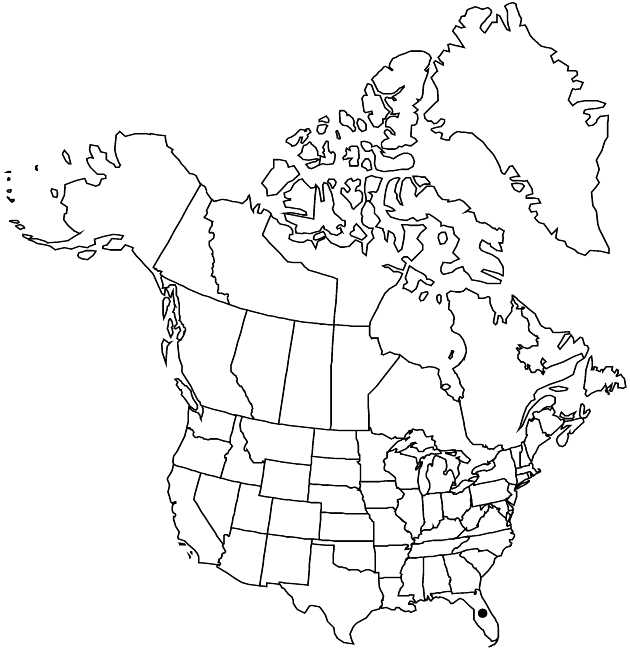Flaveria linearis
Gen. Sp. Pl., 33. 1816.
Perennials, 30–80 cm (glabrous or pubescent, mostly on distal peduncles). Stems erect. Leaves sessile; blades linear, 50–100 (–130) × 1–4 (–15) mm, ± connate, margins entire or spinulose-serrulate. Heads 10–150+, in clusters in corymbiform-paniculiform arrays. Calyculi of 1–3 linear bractlets 1–2.5 mm. Involucres oblong-angular, 3.3–4.5 mm. Phyllaries 5 (–6), linear or oblong. Ray-florets 0 or 1; laminae yellow, oval to obovate-spatulate, 2–3 mm. Disc-florets (2–) 5–7 (–8); corolla-tubes 0.8–1.2 mm, throats basally tubular, becoming funnelform-campanulate apically, 1–1.5 mm. Cypselae linear, 1.2–1.8 mm; pappi 0.2n = 36.
Phenology: Flowering year round.
Habitat: Disturbed sites, beaches, hammocks, pinelands
Elevation: 0–10(–20+) m
Distribution

Fla., Mexico (Quintana Roo), Mexico (Yucatán), West Indies (Bahamas), West Indies (Cuba)
Discussion
Flaveria linearis is variable; it typically has linear leaves, calyculi of relatively short, linear bractlets, and oblong-angular involucres. The heads are relatively small with 5–8 florets, and throats of the disc corollas are tubular at the base, abruptly expanding distally to become funnelform-campanulate. Plants of this species, the most common Flaveria in Florida, occur throughout most of the Florida peninsula, often near the coast.
Selected References
None.